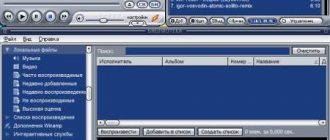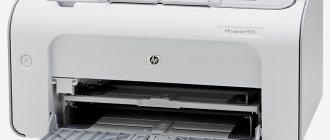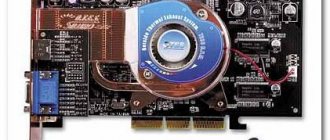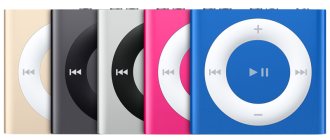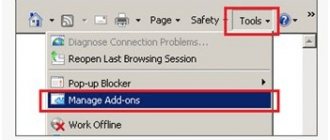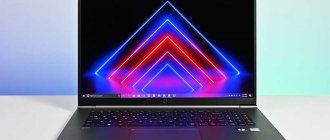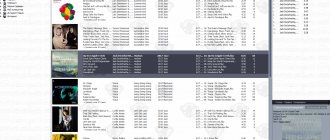Portable music players have become commonplace these days. Nowadays it is difficult to find a person who has never had a compact music player and a pair of headphones that he took with him for a walk, for a trip to work or school. But there were times when personal means for listening to music were a novelty and not available to everyone. And this continued until the Sony Walkman music player appeared on the market.
The first iconic portable cassette players went on sale 35 years ago, on July 1, 1979. The cost of these devices at that time was $150. As the story goes, a few months before the release of the first portable music player, Sony co-founder Masaru Ibuka asked the company to create a more compact music device that would allow him to enjoy his favorite opera compositions on the road and during international flights. The Sony TC-D5 cassette player that existed at that time, according to Ibuki, was bulky and inconvenient. The task fell to Sony designer Norio Oga, who some time later presented the director with the first prototype of a device based on the Sony Pressman cassette player with a recording function, and then, just four months later, assembled the first original Walkman model ready for sale.
The Walkman cassette player had a disappointing first month of sales for the company. Of the 30 thousand copies created, only 3,000 were sold in July 1979. However, thanks to an innovative advertising campaign at that time (Sony representatives simply began offering to listen to music to anyone on the streets of Tokyo), sales rose sharply, and by the end of August of the same year, Sony was able to sell all copies of this player lying in warehouses.
From this moment begins the glorious history of one of the most successful Sony brands in the entire existence of the company. A story in which cassette players gave way to CD format, MP3 and eventually grew to support streaming services. More than 400 million portable Walkman players have been sold worldwide, 200 million of which are cassette models. Sony retired its cassette players relatively recently, in 2010. Moreover, the company was forced to pay huge payoffs to the first inventor of the portable cassette player, Andreas Pavel. However, the name of this brand is still alive and is used both in the production of new MP3 players and in the Sony Walkman application. The Walkman's golden days are most likely over, of course. However, the habit and opportunity that he gave us - to listen to music anywhere and anytime - has remained with us all and is not going to go anywhere.
The Verge portal has made a selection of the most iconic music players of the Walkman brand in its entire 35-year history, and we invite you to familiarize yourself with it:
Sony NWZ-A828 player review
Sony NWZ-A828
First it will be short and to the point, and then there will be more details below the cut.
Pros: - intelligently assembled - minimum controls, everything to the point - supports Bluetooth headphones - normal video support (mp4) - instant switching on - the presence of many subtle conveniences and thoughtfulness - you can delete watched video files Cons: - does not support podcasts - non-standard cable - does not work like a standard USB drive - the player position is reset after recording new files - the screen is generally susceptible to scratches - audio files cannot be deleted
I will try to provide the minimum possible technical details; you can find this anywhere without me. Particular attention will be paid to the possibility, or rather impossibility, of using the player to listen to podcasts.
So, before Sony I had iriver and samsung, finally I got tired of fighting for ogg and I decided to buy a player from a normal company, which, in theory, should already understand a lot and be able to think through the use of its products. Sony is not the first day on the market and makes cool devices that were tested before release into the series, in addition, Sony has decent sound. In my opinion, it is stupid to evaluate a player that is usually listened to on the street or in the subway based on sound quality, but if it is good, then this is rather a plus. As I already noted the build quality - this thing is simply pleasant to hold in your hand.
Control
There is not much control required from an mp3 player: forward and backward, pause, volume and lock. All this can be easily and intuitively controlled blindly, from your pocket. All buttons are located conveniently and are easy to reach when holding the player with one hand.
Video
It normally plays mp4 without any complaints, as long as it does not exceed 320x240, otherwise it simply does not play video, only sound. Marks new downloaded files and remembers the viewing position in each of them. That is, it supports all those functions that would be so useful for podcasts. Rewinding for video at speeds like the coolest VCRs have had for a long time, there are no problems with it at all. The strangest thing is that the player cannot show any frame from the video in order to understand what kind of video it is. For some reason, Sony decided that no one would bother to create a myvideo.mp4 for each myvideo.jpg next to it, and so the designed screensavers show. For these purposes, using ffmpeg I make a screensaver from the first frame of the 140th second, but in general the position is strange.
Podcasts
Unfortunately, the player is simply not intended for listening to podcasts. Sony has models that implement specialized functions specifically for podcasts, but the nwz-a828 is not one of them. That is, the player does not know how to remember where he listened to this or that program, which ones he has already listened to and which ones he has not. Especially this move by Sony is completely incomprehensible in light of the fact that all these functions are implemented for watching video. The exception is if, in the middle of listening to a podcast, you suddenly want to watch some kind of video: in this case, it is possible to return to the exact moment at which listening to the audio was stopped. Often in podcasts there is a desire to rewind music or advertising, for this there is scrolling: you need to press and hold the “right” key. In this case, the player plays pieces to control what is happening there, and usually it is not difficult to hear the announcer’s voice and stop the scrolling. So in this case, it turns out that after stopping the scrolling, the player carefully rewinds a couple of seconds back, and thus you can hear from the very beginning what the announcer says after the advertisement or song. For one reason or another, sometimes it becomes necessary to rewind a fairly large piece of audio, and scrolling for this works very slowly. But it turned out that in pause mode the player rewinds 10 times faster, and the problem generally disappeared. Well, on top of all this, you can’t delete a podcast you’ve listened to; over time, you start to get confused about them.
General Considerations
As for using bluetooth, I’ll probably write separately, but I’ll immediately note that it can’t transfer files via bluetooth, so in any case you’ll need this very non-standard cable for recording files and charging. Under Windows there is some obscure software for the player, but if ms media player was installed, then the device is accessible as is. A separate disk is not assigned to it and copying files there, for example, with far will not work, only with explorer. In Linux, the device is mounted normally, as it supports MTP. It is charged via the same cable, and since I constantly connect the player to download new files, I never charge it on purpose. Subjectively, it lasts for quite a decent amount of time, say, a couple of films could definitely be watched. If you forget to turn it off at night, it will play whatever audio it finds and fall asleep on its own, without noticeable battery consumption. In addition to oddities like the screensaver for videos, there are also pleasant little things and thoughtfulness in the spirit: if you put it on hold while paused, you fall asleep after 10 seconds (instead of the standard minute). If you try to do something with the player while it is on hold, it will turn on and display the “ON HOLD” message for a couple of seconds. If you remove it from hold during these couple of seconds, the player will remain on; I have never noticed this with my devices before. In addition, the navigation is quite decent; somehow, with a minimum of effort, you can always find the file you need. Scrolling through files speeds up if you need to rewind somewhere far away, so there are no complaints about this. As a screensaver, it can show the clock, which in my opinion is unnecessary, but sometimes it is convenient to look at the time on it, and there is such an opportunity. In general, I would say that the only real drawback is the complete inability to work with podcasts; in all other respects, it’s quite a nice player. Watching movies on it, of course, would be too much, but TV shows, for example, are very convenient. If Sony suddenly releases the same player tomorrow, but with support for podcasts, I’ll buy it without a second thought.
Total
Overall a great player, but a so-so player for those who mainly listen to podcasts or audiobooks.
Of course, I wrote about what interests me most in the player, if anyone is interested in anything additional, ask, I will answer. Maybe someone is interested in the ability to view pictures (and there is one) or listen to the radio or use the player in voice recorder mode (there are none) - just ask.
Sound
I recently reviewed the similar Jabra Pace sports headphones, in which I admired the sound of their 12.4mm speakers. This is a really good size for sports monitors. Sony has even larger driver sizes - 13.5 mm . And the sound is better. And NWZ-WS613 is 2000 rubles cheaper. I don't understand what the catch is, considering that you can't go into the water with Jabra. Probably, the New Year's price tags have not yet been rearranged.
Sony can play music not only via Bluetooth, but also from internal memory. The 613 has 4 GB on board, the 615 has 16 GB.
Supported music formats and codecs: MP3, WMA, AAC, L-PCM / SBC, AAC, aptX.
Dive with Sony Walkman NWZ-WS613 sports headphones #nwzws613 #nwzws615
A video posted by iPhones.ru (@iphones_ru) on Dec 29, 2020 at 2:02am PST
NWZ-WS613 sound loud, balanced, slightly bassy, with clear highs and mids, going beyond sports headphones in terms of overall characteristics.
The SoundMix intelligent mode works with maps and navigators in such a way that when an audio notification arrives, the music is muted. The player also turns into a headset and you can take calls from it directly during training.
Before I go further, I’ll once again outline the three components of the success of the Sony NWZ-WS613 - form factor, degree of protection, sound. Let's assume that a certain competitor X managed to solve the issues of sound and degree of protection. Beautiful advertising leaflets with happy girls in the pool were released.
The buyer believes, orders and is disappointed.
I've been swimming in the pool twice a week for the past four years, so I've come across many models of waterproof players. Below are some examples of waterproof players that can be extended to any similar models.
SYRYN waterproof MP3 player
The separate design is inconvenient in itself. The earpads allow water to pass through, causing sound quality to deteriorate when water gets between the earbuds and your ear.
Diver DB-10 4GB Waterproof MP3 Player
Has the same problems. It is problematic to use such a player without a cap, otherwise the headphones will be washed out with water. And under the cap the pads are pressing.
Pyle PSWP6BK Flextreme Waterproof MP3 Player
The headphones get credit for being a complete solution. But there is no talk of isolation due to the lack of clamps.
Tayogo Waterproof Mp3 Player
These headphones are designed exclusively for hot tubs. They are uncomfortable to swim in because they sound disgusting and fall off your head.
Waterfi Waterproof Apple iPod Shuffle
My worst purchase ever. Waterfi coats the iPod Shuffle's electronic circuitry with a water-repellent lubricant, making water harmless to its internals. The included headphones flood with water within the first minute, and the music becomes inaudible. How many times have I looked for them at the bottom of the pool.
Only Sonya did not fall off his head, stood up perfectly without a cap and played better than anyone else in the pool.
The set includes two types of ear pads - for dry and wet activities, making Sony universal.
ZX Series
ZX2. All the best from Sony in a pocket player.
Sony's ultimate device in terms of mobile audio. But it’s immediately clear that such a thing is for real music enthusiasts who also have a tight wallet.
Unlike other Hi-Fi players, this model looks really cool, is made of expensive materials and has Android on board.
Although audio connoisseurs rarely consider this a plus, I think that for many music lovers this player will be like a breath of fresh air in terms of design. Touch screen, various wireless modules (LDAC audio codec support for Bluetooth connection), the ability to expand software functionality, 128 GB of memory with a MicroSD card slot. All these are Sony ZX series.
I would like to note that a potential buyer will need to have decent headphones costing 10 thousand rubles or more to unlock the full potential of the device.
A Sony PHA-3 or other amplifier would not hurt, since the built-in amplifier in the player is rather weak and will not fully drive some Hi-end high-impedance headphones.
You will also need to put up with some features of this type of device - this is not an Xperia Z5, but primarily a music player.
The average price of 60 thousand rubles is, one might say, exorbitant, but in the world of Hi-Fi players it is quite cheap.
Pros:
+ Beautiful design, good body materials and high-quality assembly
+ Android platform, which means the ability to expand functionality
+ Large memory capacity, expandable
+ LDAC audio codec for Bluetooth connection
+ Great battery life
Minuses:
— Built-in amplifier is weak
— No line out
Among the advantages, we can note good packaging, the presence of an original leather case in the kit, and among the disadvantages, the old version of Android 4.2, for which there will definitely not be updates.
Available models:
- Sony NW-ZX2 - 128 GB memory, black
Sony NW-ZX2 in the catalog
ZX100. Nothing extra, just music.
Cheaper Walkman model from the ZX line. The sound remains the same, but the battery life has increased noticeably.
All thanks to the abandonment of Android, although at the same time the number of functions has noticeably decreased. A model for those who are looking for the best sound, but do not need other functions. The kit includes headphones like the A25 models, which is also a plus.
As with the ZX2, I recommend using it only with good headphones.
Pros:
+ Pretty good headphones included
+ Large memory capacity, expandable
+ Noise reduction available
+ LDAC audio codec for Bluetooth connection
+ Great battery life
Minuses:
— WM port
Among the advantages, we can note good packaging, but some will consider a small number of functions compared to the ZX2 models as a disadvantage.
Available models:
- Sony NW-ZX100 - 128 GB memory, silver color
Sony NW-ZX100 in the catalog

